Art Fairs
Here Are the 6 Most Expensive Works at the Frieze Art Fair’s First Virtual Edition (and 5 Great Affordable Ones, Too)
The online version of Frieze New York allows users to sort by price. So we did.

The online version of Frieze New York allows users to sort by price. So we did.

Eileen Kinsella

The virtual Frieze New York Art Fair—now running online through May 15—offers a (browser) window into the way many people will be experiencing art fairs for the foreseeable future.
And while it remains to be seen how much buying activity will take place beyond some high-profile purchases on the first VIP day, one thing is for sure: galleries are becoming increasingly open to price transparency. Frieze encouraged dealers to post prices along with their works, noting that it lowers the barrier to entry for prospective clients, and many galleries listened. The platform also offers users the ability to search by price bracket—which allowed us to do something we’ve always wanted to do at an IRL fair: identify the most expensive and most affordable items alike.
There are 32 works listed in the $1 million-and-up category (though, frustratingly, roughly half were “price on request”) and around 1,500 in the under-$10,000 category. (There were also some glitches: it’s not possible to further classify these results from highest to lowest, and the under-$10,000 category has numerous six-figure items included by mistake. We excluded the lower-priced non-profit editions outside of the regular gallery sections.)
Armed with a fast internet connection and many cups of coffee, we combed through hundreds of works to find the priciest—and the most eye-catching examples under $5,000.
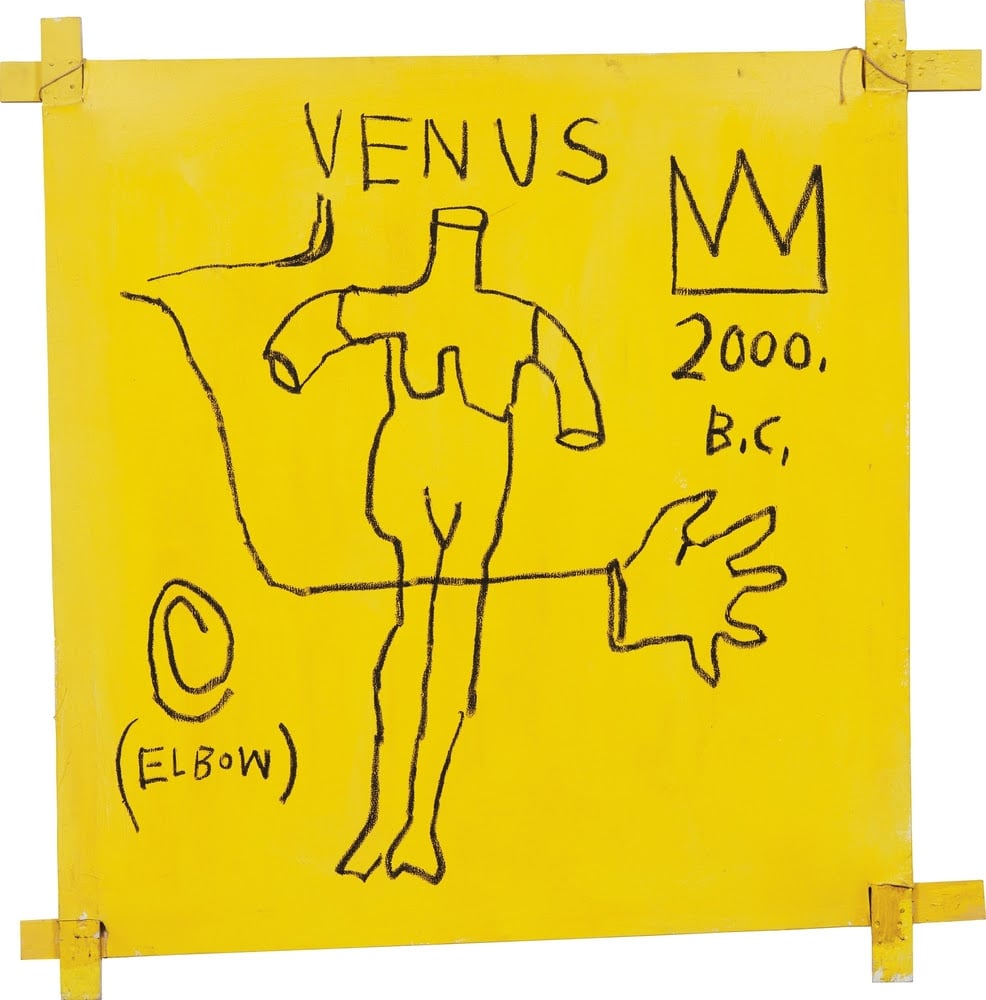
Jean-Michel Basquiat, Untitled (Venus 2000 B.C.) (1982). Image courtesy Acquavella Galleries
Blue-chip Acquavella Galleries accounted for the bulk of the priciest works on offer, including this 1982 acrylic and oil stick on canvas work by Basquiat, priced at $5.5 million. Works from 1982—when a series of solo shows rocketed the young artist to art-world stardom—tend to be his most prized, although one work doesn’t boast a particularly complex composition. The price represents a considerable premium from its last sale, in 2017, when it fetched $2.7 million at Phillips. Yet another work by Basquiat from 1982, an untitled oil stick on paper depicting a head, is on offer at London’s Waddington Custot gallery with an asking price “in the range of $4.5 million to $5.5 million.”
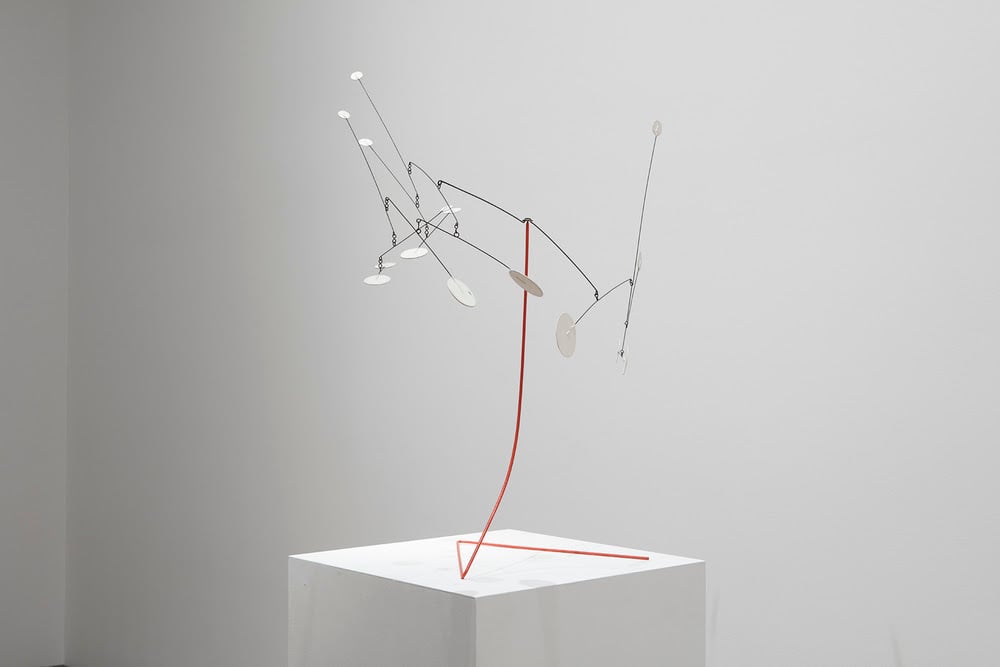
Alexander Calder, Petits Disques Blancs (Small White Discs) (1953). Image courtesy Acquavella Galleries.
The floating white discs that hover like snowflakes in this mobile reflect Calder’s skill in translating organic forms into enchanting sculptures. Small White Discs, made in 1953, is also at Acquavella—which, like some other galleries, may be approaching the viewing room concept as a chance to find previously unknown buyers for inventory that has been slow to move. This work last sold at auction in 2012, when it fetched $2.4 million at Christie’s in London.
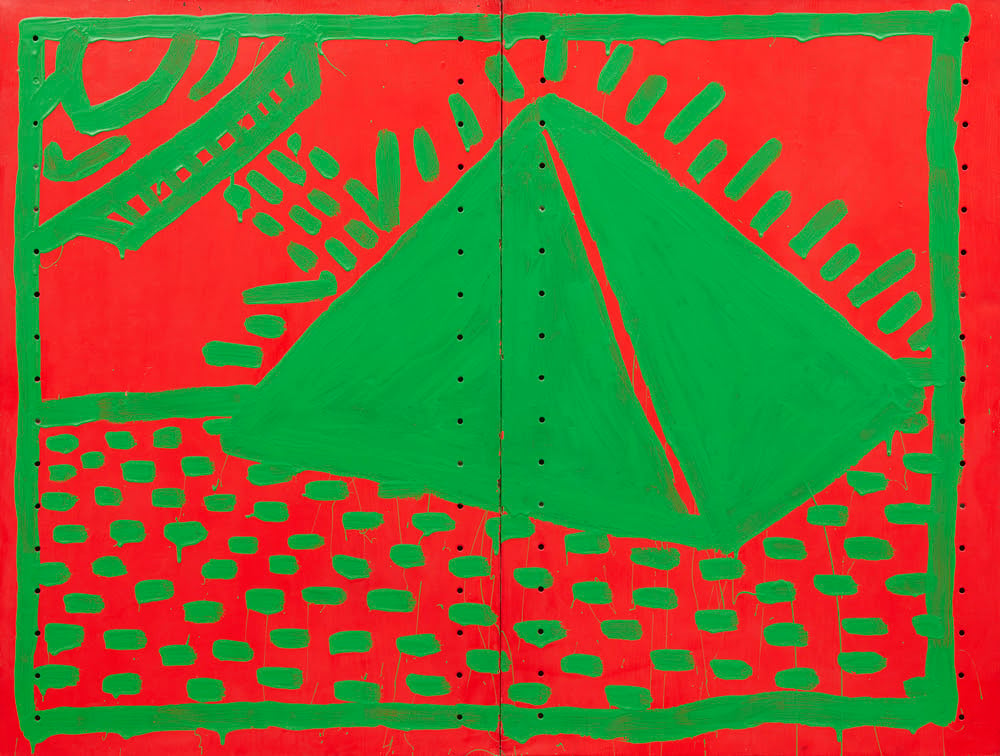
Keith Haring, Untitled (1982). Image courtesy Acquavella Galleries.
Day-glo enamel colors are combined with Haring’s distinct style of bold brushstrokes to create this densely patterned work. The painting, which last sold at auction for $1.2 million at Sotheby’s London in 2017, is reminiscent of Haring’s famous Pop art-style street murals, which he often used to raise awareness for social causes. It’s available at—you guessed it!—Acquavella.
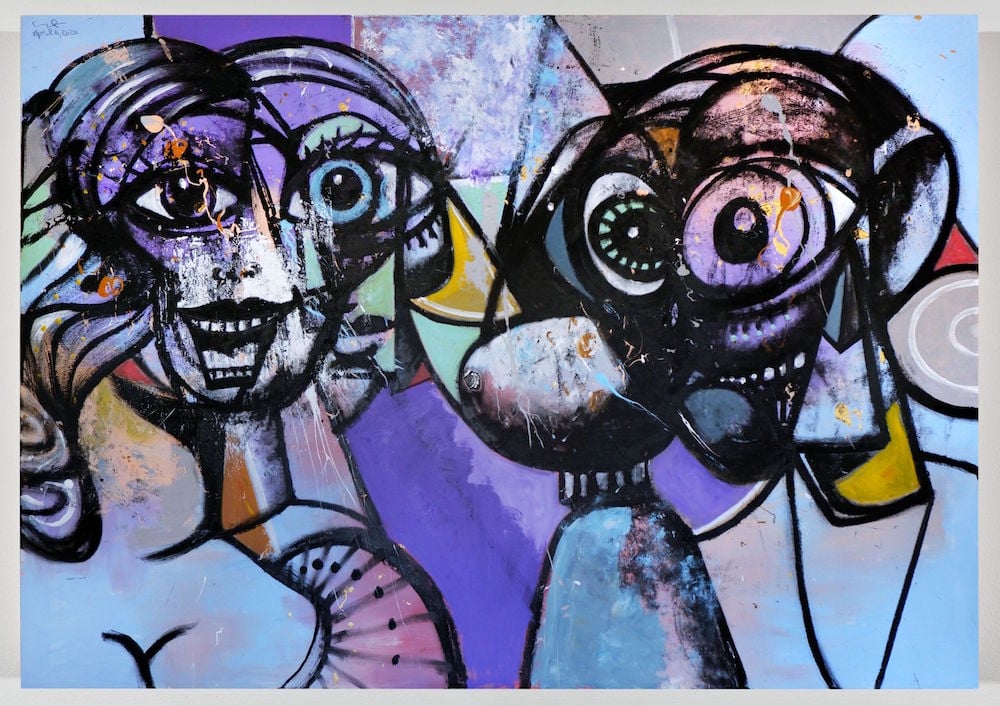
George Condo, Distanced Figures 3 (2020). Image courtesy of the artist and Hauser & WIrth.
The high-end offerings at the fair included several works priced at $2 million, including this recently executed (and almost immediately sold) painting by George Condo on the theme of isolation and social distancing. It was offered by Hauser & Wirth.
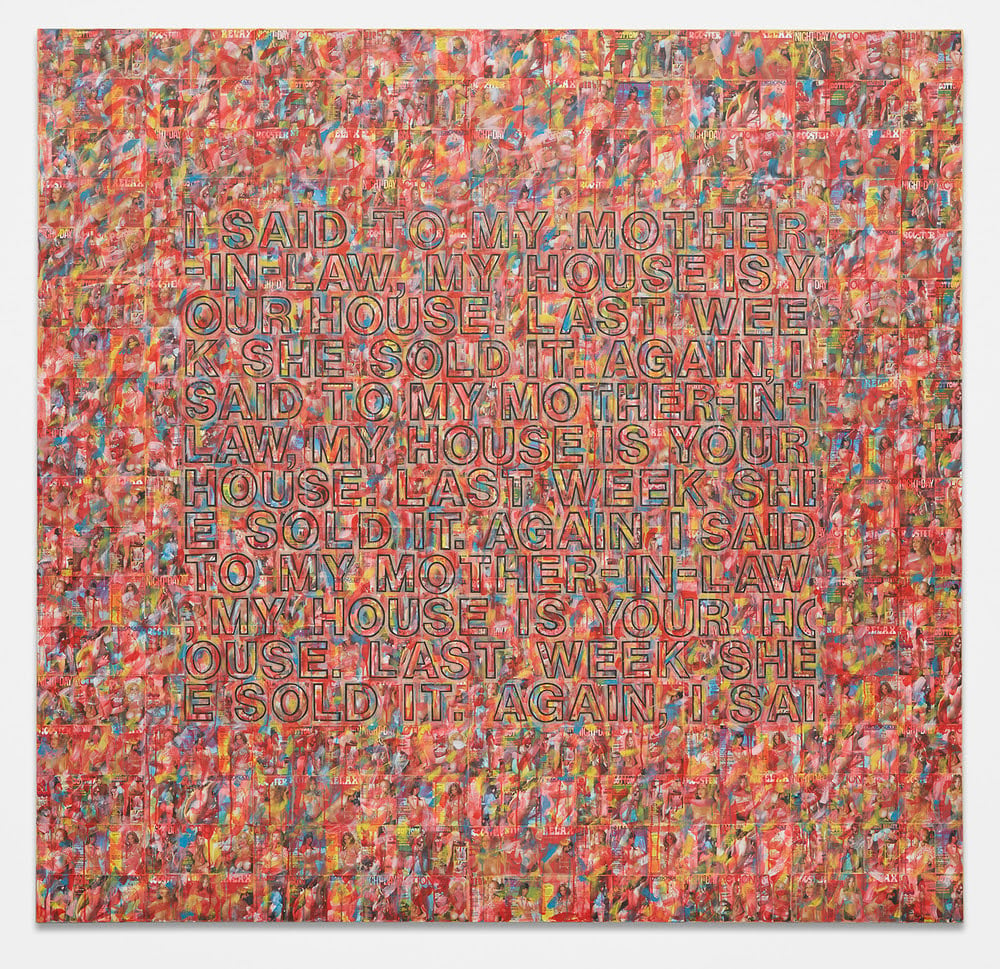
Richard Prince, The House (2007). Image courtesy of Acquavella Galleries.
Also priced at $2 million is a Richard Prince “joke” painting, The House (2007), which last sold at auction in 2017 for $996,500 at Sotheby’s New York. It’s for sale at (where else?) Acquavella.
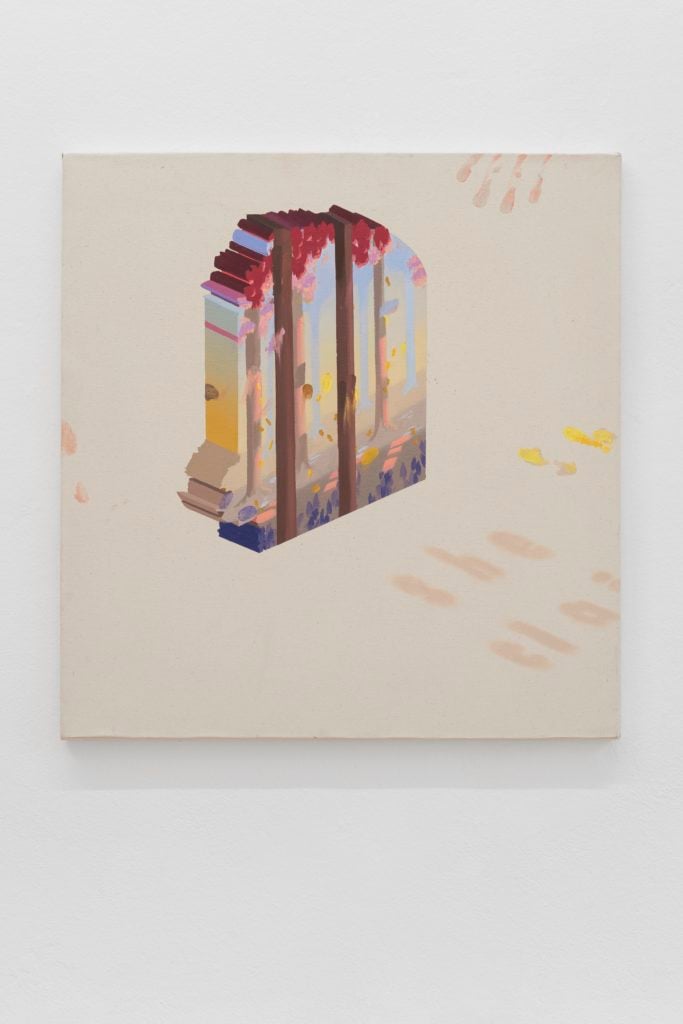
Dana Lok, Assume (Take) (2017). Courtesy of the artist and Clima Gallery.
The Brooklyn-based artist has said she sometimes thinks of painting as a theater set. Milan’s Clima Gallery is showing several of Lok’s skillfully rendered paintings, like Assume (Take), that play with framing, point of view, illusion, and flatness. We love the mix of futuristic imagery and painterly touch in this one.
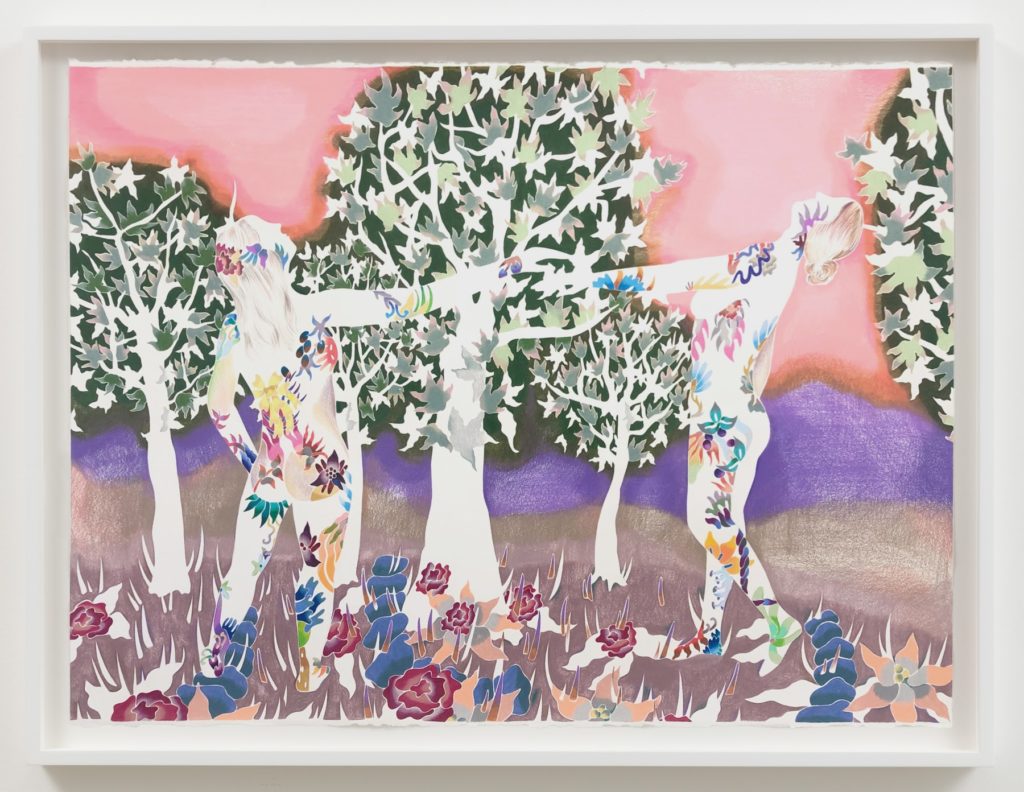
Sarah Ann Weber, Solstice (2020). Courtesy of the artist and Anat Ebgi Gallery.
The Los Angeles-based artist works primarily with watercolor and colored pencil on paper, as in this recent work on offer at LA’s Anat Ebgi Gallery. Focusing on floral, exotic, and invented organic forms, she bestows her compositions with a distinct sense of psychedelic dreaminess that combines ’70s nostalgia with our culture’s current obsession with all things witchy.
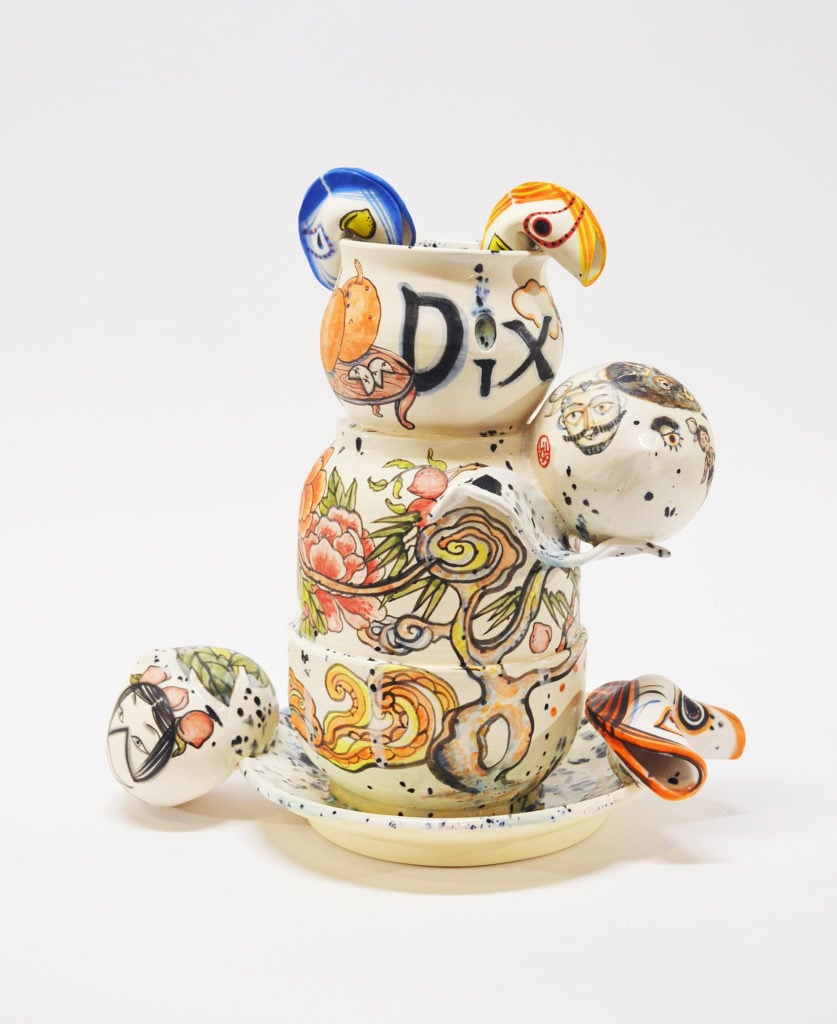
Jiha Moon, Immortal Dessert (Dixie), (2020). Courtesy of the artist and Derek Eller Gallery.
Contemporary artists are finding increasingly inventive ways to reinvigorate ceramic and porcelain, and Jiha Moon is among them. Her vessels and masks mix traditional Asian-inspired porcelain painting with contemporary Western allusions (like popular brand logos) that reference cultural displacement and miscommunication. “I want to create objects that are imaginative, mischievous, and fun, and remind people of something alive,” the artist says of her work, on view at Derek Eller Gallery.
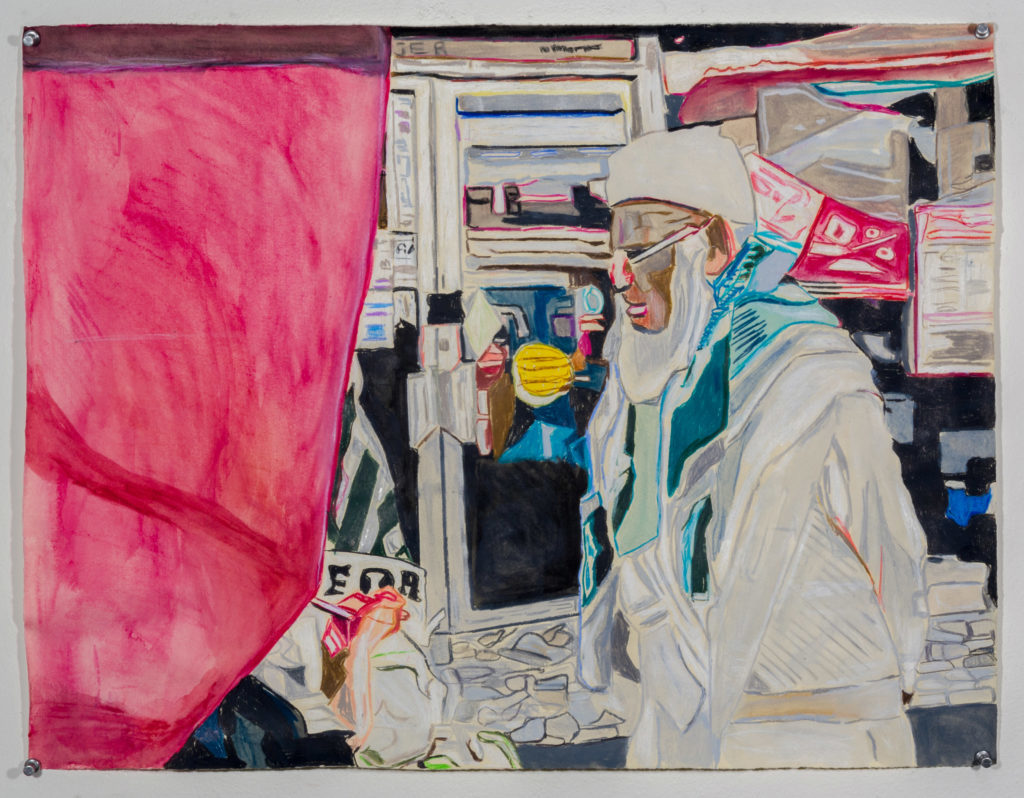
Jagdeep Raina, A Tangible Expression Part I (2019). Courtesy of the artist and Cooper Cole Gallery.
Fresh off an MFA program at the Rhode Island School of Design, the Canadian-born artist has developed a wide-ranging practice that spans drawing, textiles, writing, video animation, photography, and ceramics. The artist engages with personal and public archives to find source material with a particular focus on images of the Punjabi community in Canada. This work is presented by Cooper Cole Gallery.
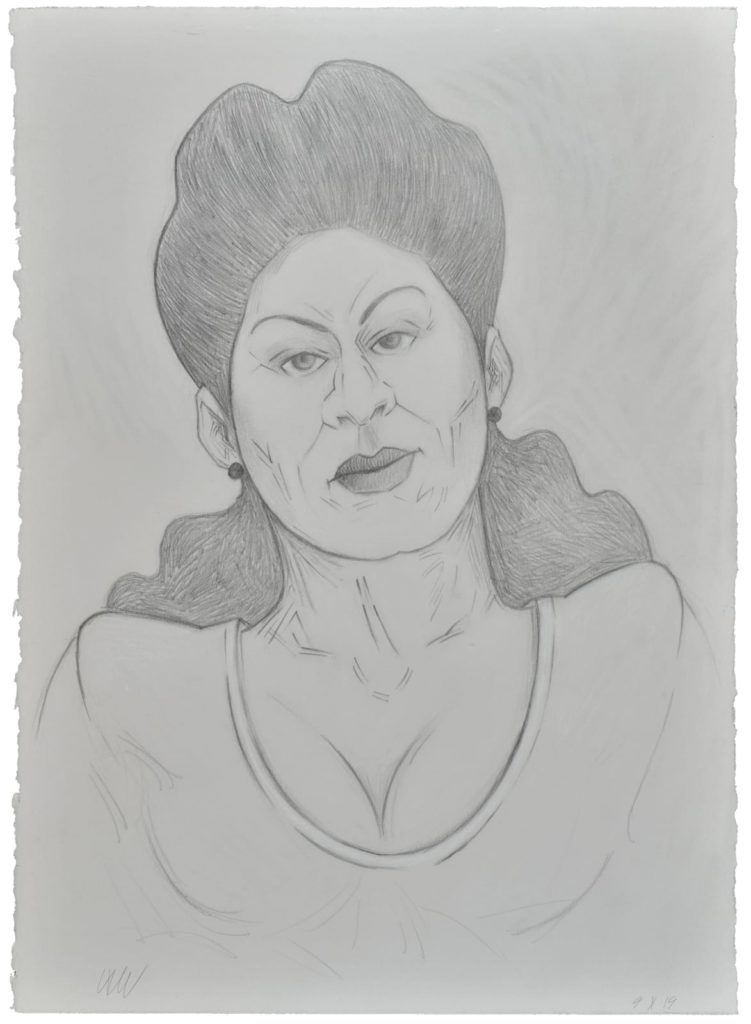
César A Martínez, La Chata (2019). Courtesy of the artist and Ruiz-Healy Art.
Martínez’s portraits are inspired by the way Mexican-American family photographs have served as intimate, personal portraits at times when only white individuals or groups were being memorialized in grand paintings. The often-melancholic individuals he depicts are actually hybrids derived from various photographs found in high school yearbooks, obituaries, newspapers, and other public sources. His work has been collected by the Smithsonian American Art Museum and is on offer at the San Antonio gallery Ruiz-Healy Art.